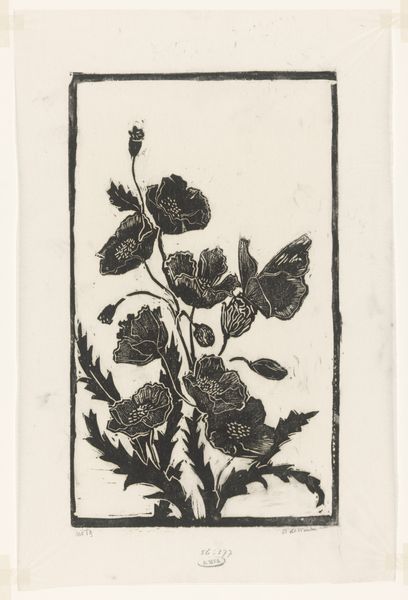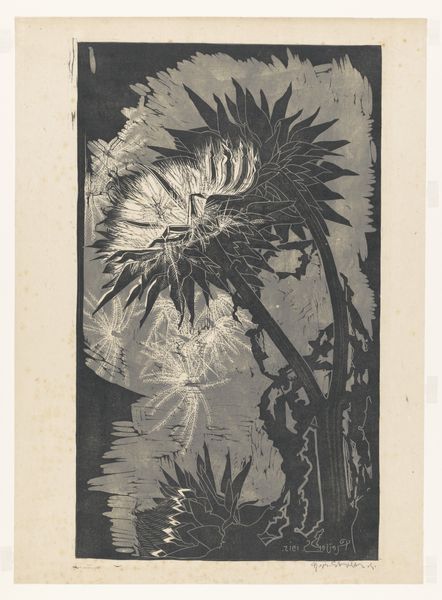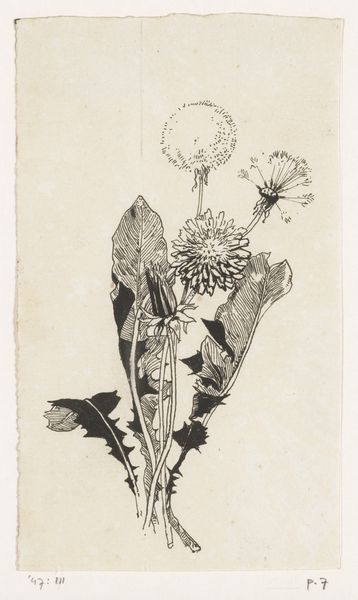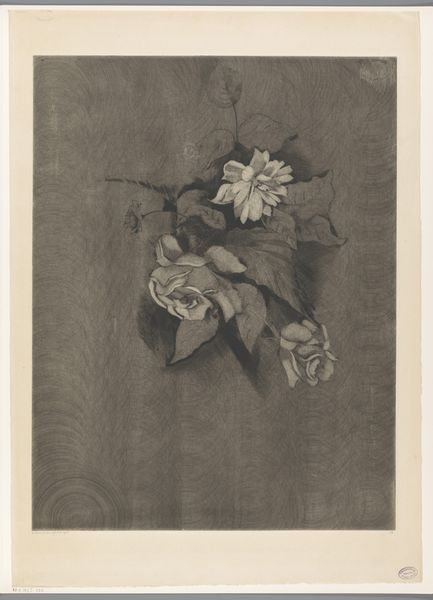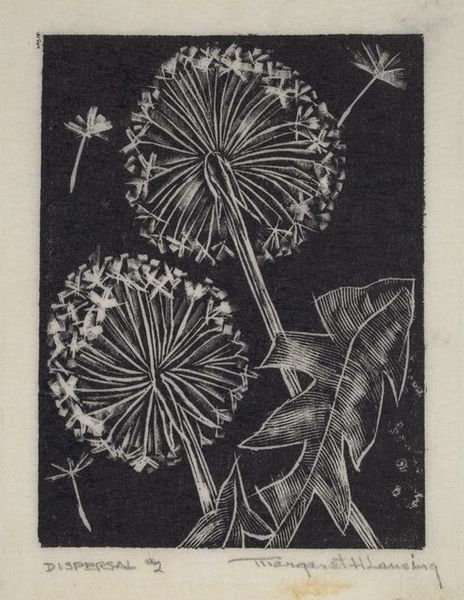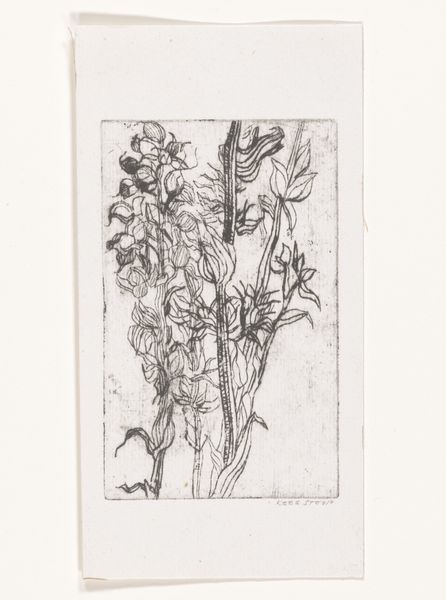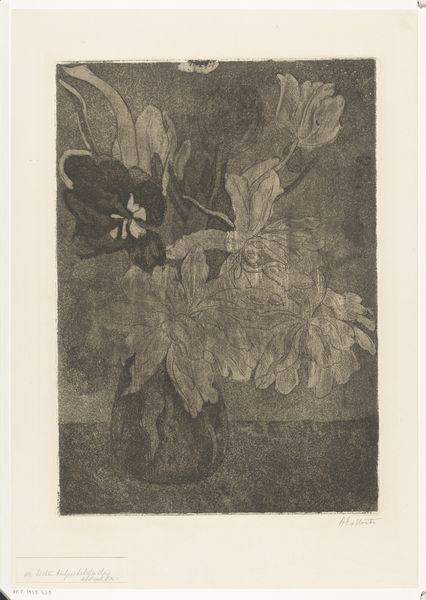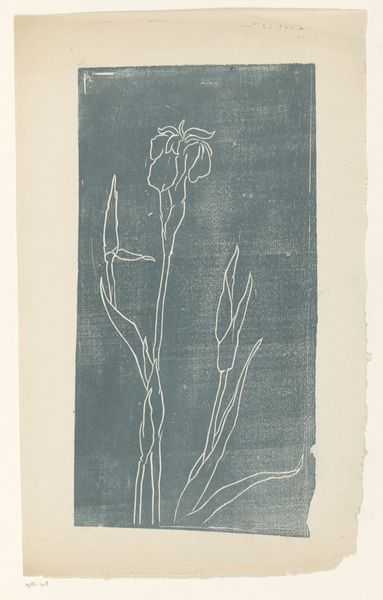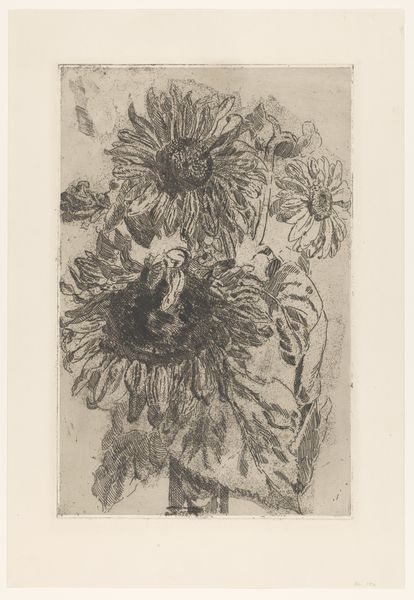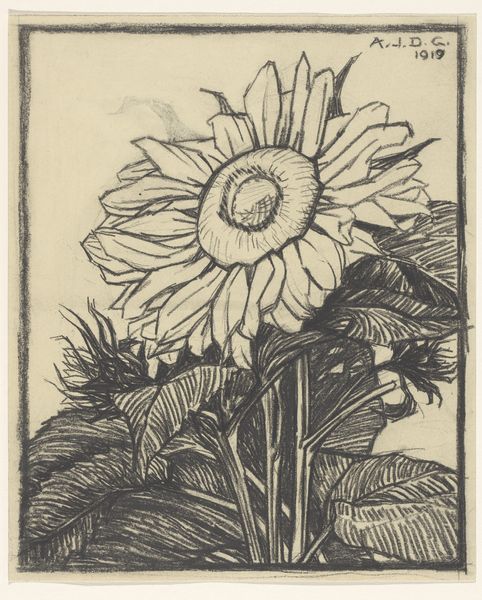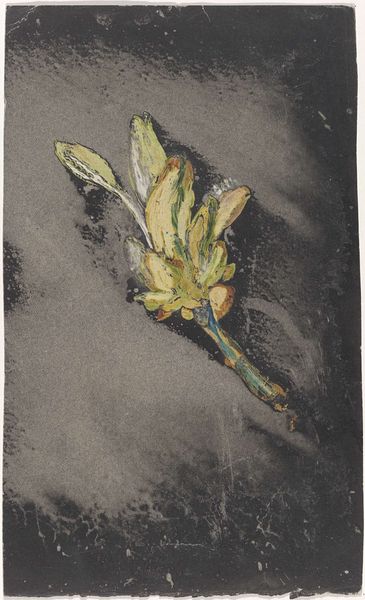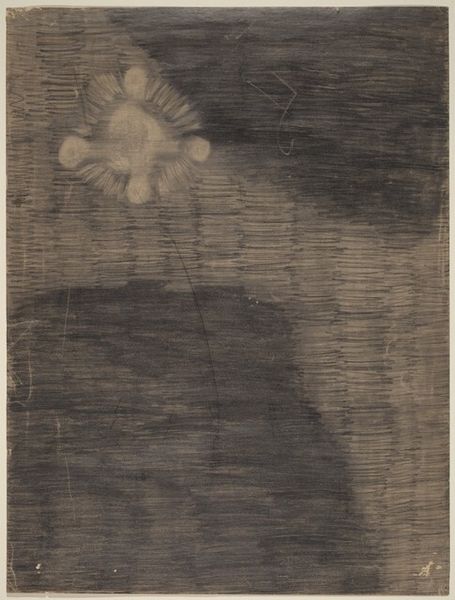
Dimensions: 79 × 68 mm (image/plate); 96 × 68 mm (sheet)
Copyright: Public Domain
Editor: So, this is "Last Poppies," an etching on paper made by Theodore Roussel in 1897. It has this haunting, sepia quality that feels both beautiful and a little melancholic to me. What symbolic meaning do you find within its imagery? Curator: That's a wonderful start. Yes, there's a definite sense of transience here, amplified by the title. Poppies, with their associations with sleep and remembrance, already carry a complex weight. But look at how Roussel renders them – they're not in full bloom, are they? Editor: No, some seem to be withering, their forms collapsing a bit. Curator: Exactly! This isn't just a pretty picture of flowers. It’s a visual poem on mortality, perhaps. Consider too, the etching technique, how the lines are used not to define, but almost to dissolve form into a misty, dreamlike space. Think about poppies in culture. What else springs to mind? Editor: Well, the poppy as a symbol of remembrance in England, particularly related to World War I...but this is earlier than that. Curator: Precisely. The resonance builds over time, doesn't it? Roussel, who was working within an Impressionist framework, seems to be interested in evoking a mood as much as depicting reality. Could this 'end of the season' motif reflect other cultural anxieties of the late 19th century? Editor: Perhaps a general fin-de-siècle feeling, a sense of an era drawing to a close, of things fading? Curator: A lovely interpretation! The choice of poppies then, becomes particularly poignant. We read it not just as an observation of nature, but a meditation on memory, loss, and the cyclical nature of time itself. Editor: I never would have looked beyond the surface beauty without your help; I see so much more layering now. Curator: Art unveils more facets with each viewing, each discussion. It holds memory for us, both personal and shared.
Comments
No comments
Be the first to comment and join the conversation on the ultimate creative platform.
